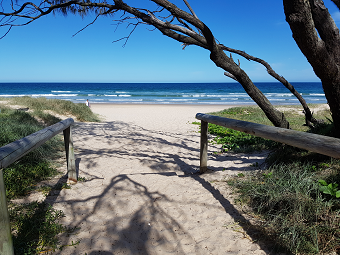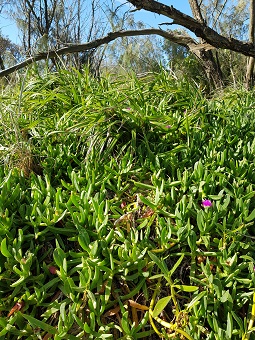
Ocean coasts are both resource rich and important landmarks. Many coastal dune networks have significant First Nations cultural value as cultural landscapes, past and current resource use and archeological sites.
Vegetated, healthy dunes are an important component of Noosa’s natural coastal backdrop. They contribute to our natural amenity and feel and add cooling breezes to our urban areas.
Many native plants and animals live in coastal dunes, some in combinations that occur nowhere else. Dunes are wildlife habitat and corridors that allow animals to move through otherwise urban areas. Sea turtles rely on the front dune slopes to lay their eggs out of the reach of high tides.

Healthy dune understory
Vegetated dunes play a vital role in sustaining our coasts in the face of wind and wave activity. This is especially important as climate change progresses, causing sea level rises and increasing the number and intensity of storms. Healthy dunes buffer the coast and can reduce flooding, wind, and storm surge impacts.
Sloping, healthy dunes help keep sand on our beaches. Waves run-out on the natural slope, reducing the amount of energy it has to lift and carry sand away. And steep dune faces left after storms soon slump, quickly returning the back of the beach to a more natural slope. Dunes are a source of sediment for off-shore bars that develop after storms, that then act as a local source of sediment to rebuild beaches and frontal dunes.
Dune vegetation slows the wind near the surface of the dune and allows sand to drop out of the air. It reduces wind and wave impacts on the dunes, reducing erosion and the movement of sand from the coast towards the inland
Dunes in good condition means that there are sources of seeds and runners nearby to recolonise disturbed areas after storm events. Vegetation acts as an entrapment point, allowing the lodgment of sand and seeds that contribute to the rebuilding and revegetation of frontal dunes after disturbance.
Protect vegetation on dunes - including trees, shrubs and ground covers: Avoid all unauthorised pruning, cutting, breaking, pulling, poisoning, mowing and clearing of any vegetation on the dunes.
Be a good foreshore neighbour
The NSW Government has produced a Coastal Dune Management Manual
See Mackay Council's great fact sheet on Coastal Vegetation.
